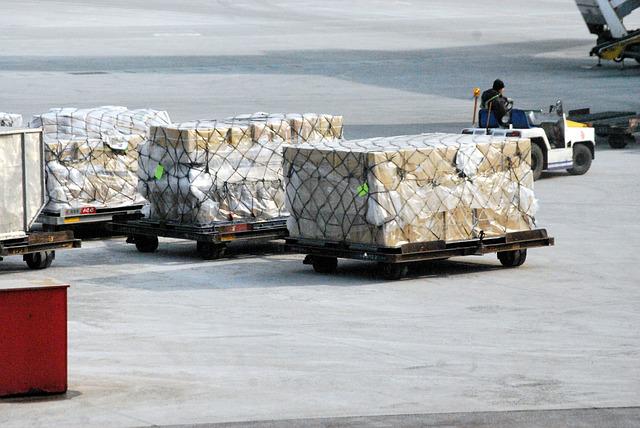
-
BOC seeks stakeholders’ opinion on E-TRACC at airports
-
Position papers will be accepted until April 20
-
An online public consultation on the proposal will also be held on that date
-
The provisions of CMO 04-2020 will govern use of E-TRACC at airports of entry
The Bureau of Customs (BOC) is again seeking comments from stakeholders on the proposed order to implement the Electronic Tracking of Containerized Cargo (E-TRACC) System at all airports of entry.
In an invitation posted on its website on April 13, BOC said position papers on the proposed customs memorandum order (CMO) would be accepted from that date until April 20.
The activity is in preparation for an online public consultation on the draft CMO scheduled for April 20. The first public consultation in August 2021 did not push through.
READ: BOC eyes E-TRACC application in airports
A copy of the draft CMO and details of the online public consultation are available on BOC’s website.
The bureau also sought comments on its draft CMO that will implement E-TRACC at all airports of entry.
The proposed CMO will provide procedures for using GPS-enabled tracking devices to monitor in real time the movement and location of transit goods for import/export and to protect government revenue by preventing and detecting fraudulent practices in the transport of cargo.
The proposed CMO will cover monitoring of inland movement of goods shipped by air using an information and communications technology-enabled system.
BOC said the proposed CMO will supplement CMO 04-2020, which established the E-TRACC System, and further implements Customs Administrative Order 15-2019 (rules and regulations on customs transit of goods in customs territories) in relation to relevant sections of Republic Act No. 10863, or the Customs Modernization and Tariff Act.
E-TRACC is a web-based system launched by BOC in 2020 to track inland movement of containerized cargoes during transit and transfer to other customs territories and facilities.
READ: BOC orders e-tracking of cargoes in transit
It allows BOC to track, monitor, and audit the location and condition of cargoes, as well as obtain real-time alarms on diversion and tampering of cargoes.
Under CMO 04-2020, an electronic customs seal (ECS) is required during the transfer of cargo to a container yard/container freight station or other customs facilities and warehouses (CFW); transit of cargo bound for free zones, inland customs office, depots, or terminals; transit to customs bonded warehouses (CBW); export of cargo from free zones, inland customs office, depots or terminals, and CBWs to port of loading; and transfer of shipments for further verification and/or monitoring.
The ECS is a GPS-enabled sealing device or lock that can physically secure a cargo and provide real-time information on its location.
Under the proposed CMO, the provisions of CMO 04-2020 will govern the implementation of the E-TRACC System in airports of entry.
An ECS will be required to be affixed to the delivery van for the following movement of bonded goods:
• Transit from the airport of discharge to free zones or CBW
• Transit from the airport of discharge to another collection district
• Transit from free zones or CBWs to the airport as port of loading for exportation
• Cargo movement to and from one CFW to another CFW, provided that movement within a five-kilometer radius to and from the airport (e.g. CFW to Cargohaus Inc., TMW or to CFW for express shipment) will be subject to continuous customs underguarding until received
• Transit by land from domestic airport to CBW or free zone and vice versa
The following cargo movement, meanwhile, will be subjected to continuous customs underguarding until received:
• Aircraft to CFW within the airport perimeter and vice versa (e.g. PairCargo, PSI, DHL)
• Aircraft to Central Mail Exchange Center and vice versa, unless it’s for transit from the airport of discharge to another collection district
• Aircraft to registered CBW as in-flight catering center and vice versa (e.g. PAL In Flight Catering Center, Macro Asia Catering)
• Aircraft to airport baggage carousel
• CFW to aircraft for domestic transfer and vice versa
Transfer of cargo subject to customs underguarding will be covered by a transfer note, also known as boat note, which will accompany the transfer of cargo to a CBW and serves as proof of delivery or receipt of the article at its intended destination, duly acknowledged on its face by the customs official stationed there.
Customs cargo clearance must be fully completed in order for all shipments to be loaded into the carrier (aluminum van, delivery van, etc.) and for said carrier to be sealed with the ECS.
Transfer/transit cargo without an affixed ECS may not be opened by any customs officer without the approval of the district/sub-port collector at the port of delivery, in coordination with the district/sub-port collector of the port where the cargo was approved for transfer/transit.
The E-TRACC System service provider will be collecting the following fees:
• P500 – within 10-kilometer (km) radius from port of discharge
• P700 – beyond 10 km radius from port of discharge
For multiple destination and multiple air waybills, the fee structure will be determined upon system activation.
Several memos have been issued since 2020 on the gradual inclusion into the system of various economic zones, freeports, and collection districts, and for imports, inter-island shipments, and CBWs. – Roumina Pablo




